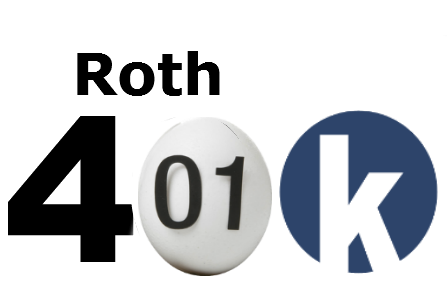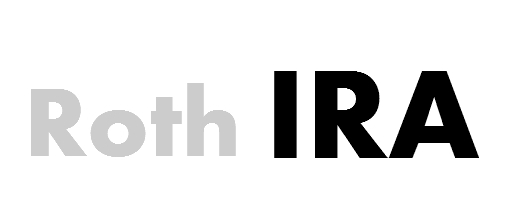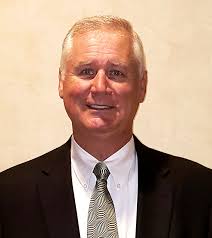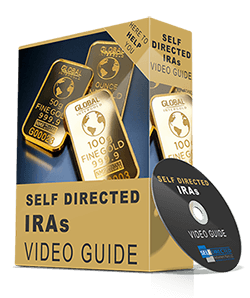
by Rick Pendykoski | Mar 20, 2017 | Uncategorized
Whether you already have an IRA or are planning to open one, there are a few things you should keep in mind. This account is more than a “piggy bank” where you put away extra cash every few years, but can prove to be a valuable personal finance tool for your future security. In fact, it’s likely to be your main source of retirement income.
These 5 tips will help you save the right way, improve gains and leverage tax benefits for your IRA:
Save As Much As Possible
Maximize your contributions as far as possible, since compound interest allows even small sums to grow tremendously over time. Aim for the maximum limit, which is $5,500 for those under the age of 50 and an additional $1,000 in catch-up contributions after you turn 50.
If you invest $5,500 per year at an average interest rate of 8%, you will have over $160,000 in the account after 15 years. The earlier you start, the more you will have by the time you retire, and catch-up contributions after the age of 50 let you boost your retirement savings even further.
Invest in a Roth IRA
Consider investing in a Roth IRA if you’re still a long way from retirement, unless you’re self-employed (in which case an SEP-IRA or SIMPLE plan is better). A Roth IRA is funded with post-tax contributions, but your earnings and withdrawals are tax-free as long as you follow the rules.
There’s no required minimum distribution either, unlike a traditional IRA. Roth IRAs can be very helpful if you don’t need money from the account, expect to receive Social Security benefits or think you will be in a higher tax bracket by the time you retire.
Roth IRA Conversions
It’s a good idea to convert your traditional IRA into a Roth IRA if you’ve already got savings in the latter. While you will pay tax on the amount you’re converting, the interest on that money will continue to grow tax-free over the years. This could be a very smart move, especially if you time it right.
A bad year when your taxable income is very low is a good time to convert traditional IRA funds without paying extra taxes. Another good time is when your traditional IRA assets drop in value due to market fluctuations, since your tax bill will be lower.
Rollover Your 401k
When you’re changing jobs, you can rollover your old 401k savings into your new employer’s defined contribution plan or into an IRA. This is a better choice than cashing out your funds, since you will be liable for taxes as well as a 10% early-withdrawal penalty if you’re under the age of 59½.
Rolling over to an IRA instead of another 401k allows you to choose where these funds will be invested, and fees are often lower too. Just ensure you choose the right IRA based on the type of defined contribution plan, e.g. rollovers from traditional 401k plans to Roth IRAs are not tax-free.
Watch the Fees
No matter what IRA type you choose, pay attention to any commissions and fees that will be applicable. These can cut into your gains if you aren’t careful, so shop around to find the best financial vehicles, services and brokerage options.
Remember that IRA contribution limits apply to all the money you invest, even if it’s in multiple accounts. Save and invest wisely today, so you have a sizeable chunk of money by the time you retire!
Rick Pendykoski is the owner of Self Directed Retirement Plans LLC, a retirement planning company based in Goodyear, AZ. He has over three decades of experience working with investments and retirement planning, and over the last ten years has turned his focus to self-directed ira accounts and alternative investments. If you need help and guidance with traditional or alternative investments, call him today (866) 639-0066.

by Rick Pendykoski | Jan 16, 2017 | Uncategorized
If you invest in various plans such as IRA and 401(k), you would know that for tapping a 401(k) free of the 10% early withdrawal penalty, you must be at least 59½ years of age. But what if you want to retire earlier than that, say by age 55, and still be able to take out penalty-free distributions? The good news is you can. Are the ‘hows’ and ‘when’ already running through your mind? This blog will answer all your questions.
What is the Rule of 55?
According to the rule of 55, any worker who leaves the job earlier than their retirement can take penalty-free retirement distributions from their employee retirement plan after reaching 55.
This rule allows people who want to retire early to get a normal cash flow and enjoy the benefits of their retirement plan sooner than expected. And as mentioned above, early withdrawal from a 401(k) plan is subjected to a 10% penalty. Hence, the rule of 55 ensures you start receiving your retirement funds after reaching 55 without triggering any penalties!
For example, if you are laid off at the age of 57 and don’t have any regular income from your work, you can dip into your 401(k) funds by withdrawing without facing penalties. This can happen if you withdraw them after the age of 55. So, if you got laid off after turning 55, you can make penalty-free withdrawals from the distribution.
How to Use the Rule of 55 to Fund Your Early Retirement?
Early retirement can come with heavy penalties during retirement fund withdrawal for people who don’t know the rule of 55! Here are the steps you should follow to fund your early retirement plans penalty-free:
- You Have to Leave the Year or After You Turn 55: Getting laid off or leaving the organization in the calendar year you turn 55 or more can make you eligible for the withdrawal of penalty-free 401(k) or 403(b) retirement funds. This means that you will only benefit from the rule of 55 if you retire during or after 55 and not before that! For example, you cannot withdraw penalty-free funds if you have retired at 53.
- You Must Withdraw From Your Current 401(k): The rule of 55 only applies to funds in your recent company’s retirement plan. You cannot reach out to your previous company’s old 401(k) plan and use that money. Moreover, this rule of 55 does not apply to an IRA.
- You Can Withdraw Early Even with Another Job: As long as you are withdrawing money only from the retirement account you took early retirement, there’s no such rule that can stop you from working part-time or full-time.
Other Ways to Fund a Penalty-free Early Retirement
We have only discussed using the rule of 55 correctly for withdrawing penalty-free retirement funds. But that’s not the only way to do that. There are other ways that can help you get rid of the 10% penalty:
- Permanent disability
- Active duty or qualified reservist
- Medical expenses exceeding the 7.5% gross income mark
- Withdrawals because of IRS levy plan
- Disaster distributions
When Should You Use the Rule of 55?
Always ensure you understand everything before deciding to go for early retirement. Here are some situations in which you can use the rule of 55:
- You are willing to retire early: The rule of 55 will help you cover your expenses. If you decide to take another job, you can continue receiving the funds from the withdrawn 401(k) plan. Remember that you are free from the 10% penalty, but you still have to pay regular taxes on them.
- You want to get rid of RMDs: After the age of 73, you have to take Required Minimum Distributions (RMDs) from your retirement accounts. But, if you use the rule of 55, you will have a reduced amount on your RMDs.
Exception in the Rule of 55
The one exception to tapping into your retirement savings early and not paying any penalty on the withdrawals is that you have to leave your employer in the year you turn 55 or older. If you do so, you can take distributions from your 401(k) without penalty, but you would still owe tax on the withdrawals. For example, you have to pay $2,500 on a $10,000 payout at a 25% tax rate, but you will avoid the 10% ($1,000 in this case) early withdrawal penalty.
It doesn’t really matter how you part ways with your employer. You can retire, get laid off or even get fired, but as long as you are 55 years by the end of the year you leave the job, the rule will apply. If you leave your job in January and turn 55 in December, then the 401(k) or 403(b) payouts anytime during the year are penalty-free. However, if you retire in December and turn 55 the following January, you will be stuck with the penalty until you turn 59½ years.
Plans Supporting this Exemption
It is important to remember that this exemption is only applicable to the funds in your 401(k) and 403(b) accounts. You must already be familiar with the former. Let’s take a quick peek into the latter.
403(b) is a retirement plan created for certain employees of the non-profit sector, public schools, and tax-exempt organizations and ministers. Individual 403(b) accounts are established and maintained by eligible employees. Those with the 403(b) plan can match payroll-deducted contributions, which is an employment incentive. These contributions then grow tax-free, often for decades, resulting in a significant increase in the initial investment.
If you turn 55 the year you leave your employer, you can withdraw penalty-free income through these two accounts; however, if you decide to roll those funds over into an IRA after you leave your job and then want to withdraw some money, you’ll be subjected the 10% early withdrawal penalty until you turn 59½.
What are Alternatives to the Rule of 55 Withdrawals?
The rule of 55 is not the only way you can access penalty-free early retirement funds! A Substantially Equal Periodic Payment (SEPP) exemption or IRS Section 72(t) distribution is one method to consider.
Decide Wisely!
If you can wait until you reach 59 ½, you should do that. However, if you think you are mentally and financially ready to retire early, the rule of 55 is one of the most flexible options!
So, carefully consider your options during retirement planning and choose the plan that benefits you the most. Our plans allow for this type of distribution. At Self Directed Retirement Plans LLC we can assist with this process but it is always wise to consult a tax professional.
Rick Pendykoski is the owner of Self Directed Retirement Plans LLC, a retirement planning company based in Goodyear, AZ. He has over three decades of experience working with investments and retirement planning, and over the last ten years has turned his focus to self-directed ira accounts and alternative investments. If you need help and guidance with traditional or alternative investments, call him today (866) 639-0066.

by Rick Pendykoski | Apr 26, 2016 | Uncategorized
Many companies use 401(k) plans as tools for recruiting and retaining talented employees. These plans also help employees to plan their retirement. A part of their pay-check, along with a matching fund (mostly) from the employer, is put away in a retirement account. The employee is responsible for managing the allocation of the funds into various investment vehicles.
If you want to manage your retirement funds with great authority and ease, you first need to get a grasp of the 401(k) plan basics. Learning the basic principles of 401(k) will help you to make better financial decisions. Here are a few strategies that can help you manage your 401(k) like a pro.
Contribute the maximum for the match
If your company is matching your contributions, don’t miss out on the match. Contribute as much as you can. Your company is giving you free money to participate in the retirement plan, and as a rule, you should never say no to free money.
You may want to consider contributing to an IRA once you reach the maximum contribution for the match. With an IRA, you have more investment choices and can easily diversify your savings.
Learn the basics of investing
The basic knowledge of investing can help you understand terms like an expense ratio, risk tolerance, and 12B-1 fees. Carefully read through your plan information. If you do not understand a few terms, look them up online.
Get help for managing your account
A report published by Financial Engines, Inc., in 2014, found that assets managed by professionals gave an average of 3.32% more in returns than accounts managed without professionals. Even if you have a little investment knowledge, it’s worth getting help from financial advisors. However, they come at a price. They usually charge a fee of nearly 3% of the account holder’s total account balance. Online financial advisors may charge a little less.
If you have some knowledge of investments, you can do-it-yourself too. There are a few 401(k) plans that offer free professional advice or may even provide you model portfolios that you can take inspiration from.
Another good option of managing your account would be using a combination of both a DIY approach and a professional manager. You will find financial advisors who are willing to work with you on this basis too.
Rebalance annually
Just like your life, your 401(k) also needs maintenance. And in the investment world, maintenance is called rebalancing. The value of your assets moves up or down, thus becoming a larger or smaller percentage of your overall investment portfolio.
You need to have a specific allocation of your assets. For example, if you are above age 40, you might have 80% in stocks and 20% in bonds. If this allocation goes out of balance due to market fluctuations, you may have to sell or buy assets.
You need to rebalance your portfolio to your suggested investment allocations. Once a year is a good period to perform this task. You can also consider rebalancing when you are preparing your taxes.
Consider the index fund
The thrill and excitement of stock picking, appeal to a lot of people. But it’s a gamble. A good idea would be to invest in an index fund. Research shows that index funds outperform actively managed funds in the long run.
The index fund follows the market index. The fund simply follows the S&P 500 and rises and falls with that index. There is no guesswork here. And the fees you pay for index funds are lower compared to the funds that try to pick the next high performing stock.
Go beyond 401(k) to have a good investment mix
Your investment portfolio should be a mix of several investments, and 401(k) should be one of your many retirement vehicles. A home, collectibles, a side business, and other retirement accounts like an IRA should be part of your investment portfolio.
When you leave your employer or switch jobs, consider rolling over your previous employer’s 401(k) into an IRA or your new employer’s plan. A rollover of your 401(k) into an IRA gives you a wide range of investment options. You can easily spread your assets and have a great portfolio mix and generate better returns.
Get professional help with investment allocations
Whether you are investment savvy or not, it’s worth taking advice from a professional on how to structure your asset allocation.
You don’t need to hire a financial advisor if you don’t want to pay the expert for the advice. You can turn to 401(k) plan websites or robo-advisors that offer suggestions based upon your age, gender, and risk tolerance ability. It’s a good way of getting asset allocation advice at no cost.
Another way of getting free advice is to get in touch with the advisor who works with your 401(k) plan. Finally, if these options do not appeal to you, get a financial planner on board at an hourly rate.
All of these approaches are low cost or free, but can have a significant impact on your final balance. So, you don’t have any reason not to do this.
Review your allocations every couple of years. Any change in your financial situation or family (death, marriage, child, and job) can have a significant impact on your ability to bear the risk.
Allocate your savings to target-date funds if you want to keep it simple
People who are too busy to participate more actively in managing their accounts allocate their savings to the target date fund (the date is closest to the year they turn age 65). Since there is no rebalancing or allocation review required, the target-date fund is the easiest way for people to invest. You can also consider investing 100% of your balance in an age-appropriate target-date fund.
If you want help in managing your 401(k), call Self-Directed Retirement Plans LLC
FAQs
Can I Manage My Own 401(k)?
Yes, you have the right to select where to put your money in your company’s 401(k) plan. Usually, you are able to select from a wide range of options, including mutual funds, exchange-traded funds (ETFs), and maybe even company shares. However, it’s important to note that you can’t invest in securities that are not available through the plan. This means that you typically are unable to pick certain stocks or bonds.
Do I Need a Financial Advisor to Manage My 401(k) Plan?
If you already have a financial advisor who helps you with your personal finances, they can assist you on how to invest your 401(k) contributions. Additionally, some employer 401(k) plans also provide access to financial advisors who can assist participants with their investment plans. Whether you should consult a financial advisor depends on your understanding of finance, how confident you feel, and your willingness to incur any associated costs (as advisors often charge fees).
Rick Pendykoski is the owner of Self Directed Retirement Plans LLC, a retirement planning company based in Goodyear, AZ. He has over three decades of experience working with investments and retirement planning, and over the last ten years has turned his focus to self-directed ira accounts and alternative investments. If you need help and guidance with traditional or alternative investments, call him today (866) 639-0066.
by Rick Pendykoski | Mar 14, 2016 | Uncategorized

There is an assumption by many people that employer-sponsored retirement plans are generic. The fact is that there are several types of retirement plans which an employee can operate with an aim of saving for retirement.
Your choice of a retirement plan is determined by several factors about your employer such as, what economic sector the employer is involved with as well as the size and type of that employer.
An employer-sponsored plan for saving towards retirement can be used by both the employee and the employer. By having money directly deducted from the pay check, both parties get a chance to save even before they start on spending the pay check. Some employers even go an extra step of matching their employees’ contribution, something you wouldn’t mind, now would you? Plus this will definitely act as a direct incentive to save more.
The seven most popular employer-sponsored retirement plans and their features are:
SEP Plan (Simplified Employee Pension)
- This retirement option is mostly offered by small businesses to their employees.
- As an employee you can also set up one yourself.
- Typically known as a SEP-IRA plan, it is based on Individual Retirement Accounts.
- Annual contribution limit is pegged at 53,000 dollars.
SIMPLE Plan (Savings Incentive Match Plan for Employees)
- Offered by small employers to their employees.
- As an employee you contribute an amount of your choice and your employer can match that amount up to 3% of your salary.
- There is a limit to how much contribution one can make in a year, for instance, for 2016, it stands at 12,500 dollars. If one is 50 years and above, there is a provision for a ‘catch-up’ contribution which also has a limit ($3,000 for 2016).
401(k) Plan
- Is mostly offered by large businesses.
- It is funded by an employee but the employer may also contribute a matching amount.
- The account is wholly managed by the employee including choice of how to invest the funds. These contributions are usually tax-deferred up until the time withdrawal is done at retirement age.
- If the funds are withdrawn before retirement, one is penalized.
- There is a limit to how much one can contribute annually, for instance the limit for 2016 is 18,000 dollars.
Roth 401(k) plan
- The benefits are the same as with a Roth IRA and the contributions by an employee are similar with a 401(k) plan.
- Employee contribution limits are also the same as those of a 401(k) plan, which is better than for a Roth IRA.
- Any contribution into this plan is not tax-deductible.
- All earnings accumulate tax.
403(b) Plan
- This is identical to the 401(k) plan save for the fact that it is designed for NGOs.
- 403(b) Plans are funded by employees primarily with tax-deductible contributions.
- Employers can match contributions but to a certain percentage.
- Contribution limits are the same as those of 401(k) plans with earnings accumulating on a tax-deferred basis.
457 Plan
- These plans are similar to 401(k) plans and are offered to local and state government employees.
- They have identical characteristics with 401(k) plans including contribution limits.
- The main difference is that if an employer offers both a 401(k) Plan and a 457 Plan, as an employee you can contribute fully to both plans hence the benefit of a doubled limit.
Defined Benefits Pension Plan
- The plan is also known as a traditional retirement plan.
- It was more common in the 1970s.
- Replaced by defined contribution plans.
- The plan is controlled fully by the employer and the employee has no control at all over the funds. The employer is responsible for supplying the employees’ contribution and the monthly benefit given to him/her.
Rick Pendykoski is the owner of Self Directed Retirement Plans LLC, a retirement planning company based in Goodyear, AZ. He has over three decades of experience working with investments and retirement planning, and over the last ten years has turned his focus to self-directed ira accounts and alternative investments. If you need help and guidance with traditional or alternative investments, call him today (866) 639-0066.

by Rick Pendykoski | Jan 16, 2016 | Uncategorized
Making the right choice of a financial advisor is as important as the advice you will get from these experts. For a physician, things get trickier because you need someone with a background in handling your kind of portfolio.
Whatever you do, never rush the process of hiring but instead invest time to research to get a professional who puts you first the same way you do with your patients. These experts are invaluable in different aspects of your financial life from taxes, estate planning, employee benefits planning, insurance to budgeting and much more.
Getting Started
This is the trickiest part but if you get it right you are on your way to success through invaluable financial advice. The internet offers you a plethora of resources that link you with industry experts. These include websites run by the industry’s professional bodies such as Financial Planning Standards Council (FPSC), Certified Financial Planner Board and Financial Planning Association among others.
Asking the Right Questions
Once you visit these websites you need to create a list of credible professionals. This is not as easy as it might sound and as such, you need some yardstick to guide you. Before including any financial expert on your shortlist, make sure you assess some of these factors:
- Credentials and Certifications: Education and professional background of your advisor largely determines how effective they will be. Considering they will play a large role in your financial life, you must ensure they hold solid credentials, such as Certified Public Accountant (CPA), Personal Financial Specialist (CPA/PFS), Chartered Financial Consultant (ChFC) or Chartered Financial Analyst (CFA). You must ask which certification they hold before hiring.
- Reputation: In financial advisory, it is common for clients to make complaints regarding any ineffective financial expertise they get. High net individuals (HNIs) are always filing claims against their former planners and you must avoid this by asking about any disciplinary action taken against the firm. You should also verify this by visiting FINRA or Securities and Exchange Commission (SEC) complaint pages to ascertain their disciplinary history.
- Payment structure: To choose the right financial advisor, make sure you get a clear method of compensation. This will help avert future costly legal tussles. Ask which payment method they use from the common four. Some will ask for a salary while others go for commissions based on the value of transactions made. Another common method of payment is fee-for-service only, which is an hourly agreed rate or a flat rate for a comprehensive financial plan. There are also those who combine fees and commissions. Whatever you do make sure you ask about the method to be used and assess the pros and cons.
- Range of services: This is one of the most important questions you must ask your financial advisor. You need to assess your needs as a doctor because your practice’s model varies from other clients say lawyers or retail owners. A reliable advisor must provide a scope of services that dovetail your needs. Consider crucial aspects of your practice and personal life including accounting, tax, cash flow advice, retirement plan, estate planning, liability insurance strategies and any other service you feel is essential for your practice.
Bottom-line
Choosing your advisor on financial matters needs a well-laid plan. You must assess their professionalism, dedication to your needs, communication ability, future outlook and experience in the industry.
Once you have assessed all your needs, it becomes easy to interview these experts to hire the best. Experts say that the best hire will be the person who listens and thus understands exactly what you need. With a checklist of the questions to use, it becomes easy to pick the best person to represent your financial interests.
Rick Pendykoski is the owner of Self Directed Retirement Plans LLC, a retirement planning company based in Goodyear, AZ. He has over three decades of experience working with investments and retirement planning, and over the last ten years has turned his focus to self-directed ira accounts and alternative investments. If you need help and guidance with traditional or alternative investments, call him today (866) 639-0066.
by Rick Pendykoski | Nov 16, 2015 | Uncategorized
If you want to save money for retirement and enjoy the benefits of your hard work, then putting your money into a retirement plan is the best bet. Before you start planning your nest egg, however, it’s best to understand where to park your funds and how you wish to spend them when the time comes.
Also, depending on your current earnings and kind of work you do, you may want to figure out how to save on tax. With both the Roth 401K and Roth IRA plans, your capital gains, dividends and interest within the account will not be taxable, and contributions are made after taxes.
2024: Roth IRAs vs. Roth 401(k)s
Roth IRA:
- Income limit: $161,000 ($240,000 for couples)
- Max contribution: $7,000 ($8,000 if 50+)
- Versatile investment options
- Penalty-free withdrawals on contributions; 10% tax on early earnings withdrawals
- No borrowing, except through rollover
Roth 401(k):
- No income limits
- Max contribution: $23,000 ($30,500 if 50+)
- Limited investment choices
- 10% penalty on withdrawals before 59½
- Borrowing up to 50% or $50,000 from account balance
What is Roth 401K?

With a traditional 401K plan your employer would take a sum out of your earnings before taxes and match that, which lowers your taxes, but withdrawals may be taxed. With a Roth 401(k), you pay taxes on contributions, and the money in the account keeps growing tax-free. This account can also be rolled over into a Roth IRA later in life and when you roll the Roth 401 k, you avoid RMD’s (required minimum distributions).
Benefits of a Roth 401(k)
The major benefits of of a Roth 401(k) include:
- Tax Free: Money withdrawn from a Roth 401(k) plan is completely tax-free, not just tax-deferred
- Loans: You may be eligible to apply for a loan against the account, which can be very handy when you’re starting a family or facing other life changes
- Diversification from Income Tax: Although you think you may be in the lower income bracket when you retire, if you have cash flowing in from different avenues, it is worthwhile to have some income that can be withdrawn tax-free
What is Roth IRA?

A Roth IRA is a plan that you set up independently after income tax has been deducted, and you have some money left that you wish to invest. Remember that based on the income limits (listed in the table below), you may not be permitted to contribute the total amount (and/or contribute at all), while a Roth 401K allows you to contribute regardless of your income.
Benefits of a Roth IRA
The major benefits of of a Roth IRA include:
- Full Control: It has nothing to do with your employer’s contributions – you decide the amount you wish to invest, and where to invest it
- Tax-Free: Withdrawal is tax-free, as long as you have been invested in the account for at least 5 years and do not withdraw more than your contribution
- Lower Age Criteria: You can start making withdrawals at age 591/2, and there is no required minimum withdrawal
- Flexibility: Not only do you have access to the funds in an emergency, there are some provisions for first-time home purchases and college expenses too.
Differences between Roth 401k and Roth IRA
| Roth 401(k) |
Roth IRA |
| Dependent on employer’s contributions to the account |
Individual is in full control of where and how much to invest |
| Contribution can be as high as $22,500 ($30,000 after age 50) |
Maximum contribution is $6,500 per year ($7,500 after age 50) |
| No income limits for contributions |
Contributions are off-limits if your MAGI is higher than $116,000 as an individual or $183,000 as a married couple filing jointly |
| Required minimum distributions after the age of 701/2 |
No required minimum distribution |
| With an employer-sponsored 401(k), early withdrawals incur taxes on the earnings and 10% penalty on taxable parts of distribution and unseasoned conversions |
Early withdrawals of contribution amount and seasoned conversions do not incur tax or penalty, but additional amounts are taxable, with 10% penalty if not qualified distributions |
| Employers can match contributions through a pre-tax account |
Employers cannot match contributions |
| Loans of up to 50% of balance/$50,000 may be available depending upon the plan, if still employed with employer that set up the 401(k) |
No loans available |
If you are employed and the company offers a 401(k), put in as much as possible up to the amount your employer will match – it’s like free money. Don’t just stop there – extra savings can simultaneously grow in a Roth IRA account, so that you can relax and enjoy your hard-earned money when retirement comes!
Also Read: Pros and Cons of a Roth IRA
Rick Pendykoski is the owner of Self Directed Retirement Plans LLC, a retirement planning company based in Goodyear, AZ. He has over three decades of experience working with investments and retirement planning, and over the last ten years has turned his focus to self-directed ira accounts and alternative investments. If you need help and guidance with traditional or alternative investments, call him today (866) 639-0066.











